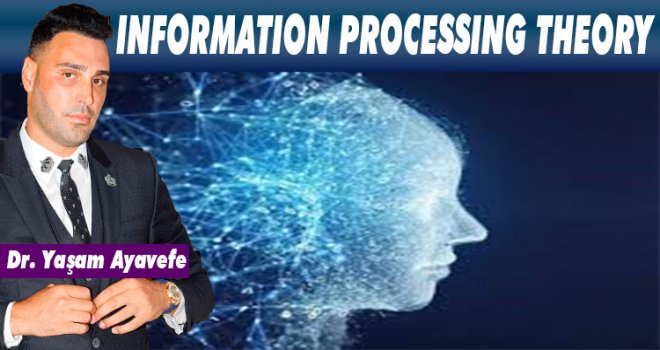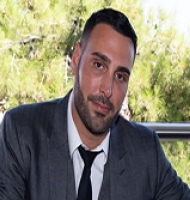

INFORMATION PROCESSING THEORY PIAGET

The knowledge necessary for successful innovation is modeled. This is called conceptual modeling. So, they can be used to solve other problems that share this information, albeit in part.
These models will make it possible to optimize information flows and quickly build decision support systems in a modular way, experience the feedback bases, or even design support systems or support the service customer.
These work in synergy with their smart assistants. In addition to information processing techniques, other information and communication technologies are also easy to use. It can inspire innovative ideas about needs or simply benefit from a new field of research or development.
Thus, games emerged from a hypothesis that it is more effective to engage in existing (electronic games), immersive technologies (immersion in a virtual world) and fun, attractive education.
This playground is vital even when it comes to an inaccessible (nuclear power plant) or dangerous (battlefield) environment and certain simulations.
Added smart agents to predict or explain decisions or actions. But the need for serious games was never articulated.
Education and Formation
Innovation ecosystems facilitate the training of participants in real time. They learn things that can be used immediately when exchanging information with colleagues or other remote experts.
This flow includes, for example, internal exchanges using social networking. Feedback at all levels not only facilitates improvement of existing but can also stimulate new ideas.
All interested people look forward to learning about competition, finding opportunities, exploring new applications and technological possibilities or simply enriching their intellectual capital.
The technology transfer mechanism takes advantage of opportunities to transform research results into products, services, businesses and jobs.
Simulators contribute to controlling the environmental impact of activities associated with the transformation of ideas into values.
They can affect the strengthening of natural ecosystems and the conservation of biodiversity. Indeed, simulators make it possible to analyze the situation before acting.
So, for example, we can choose materials with the least pollutants and high recyclability.
Interaction with Other Systems
Nature-inspired design shows different ways when an object is considered to interact with its biological ecosystems rather than in isolation.
In a globalized society, it is essential to take cultural aspects into account for at least two reasons. Identifying the wealth and capabilities that can enhance an organization's values and building collective intelligence.
The benefits of such an organization are measured regularly. These measures also concern intangible capital and financial capital, which are well known to CSR5. Such an analysis is guiding in the complexity of existing systems.
At a time when developed countries seek growth at all costs, there are other avenues to take advantage of. The usual logic of the industrial age leads to stagnation. Clearly, intangible heritage now occupies an important place in companies.
Therefore, the management of this capital determines the orientation of the information systems as well as the strategy of the organizations.
Paradoxically, information assets are the most difficult category for business to understand, process and use. Decision makers are still poorly equipped to value them.
The main pitfalls encountered to date aim to identify the exact place occupied by information in the intangible heritage and their specificity. It has to do with the reduced ability to identify lines of action that can improve them.
Information Presence
All the characteristics of the company are an integral part of the intangible capital:
- The value of this asset may or may not be subject to an accounting valuation (intangible assets defined in accordance with IFRS / IAS3, other intangible assets);
- Its identifiable elements may consist of formal assets (information stored in the physical environment) or informal assets (held by company employees).
Certain rights (artistic and literary, industrial, sovereign) apply to each of its assets. In addition, these rights are sometimes provided by legal entities (private or public), and sometimes by natural persons.
- These assets may be acquired or created for purchase through accumulation over time (content of a database, know-how, brand, relational or corporate capital).
It is understandable that all these variables contribute to greatly complicating the accounting and valuation of these assets.
In addition, a company's knowledge has its own characteristics that render many of the mechanisms normally used for valuing and using intangible capital inoperative.
Dr.Yaşam Ayavefe
-
 Bayındırlık ve Ulaştırma Bakanı Erhan Arıklı'nın 1 Mayıs İşçi Bayramı mesajı yay..
Bayındırlık ve Ulaştırma Bakanı Erhan Arıklı'nın 1 Mayıs İşçi Bayramı mesajı yay..
-
 49 araç trafikten men edildi.
49 araç trafikten men edildi.
-
 Burak Maviş: Yozlaşan tüm yönetim anlayışlarını protesto etmek için herkesi yürü..
Burak Maviş: Yozlaşan tüm yönetim anlayışlarını protesto etmek için herkesi yürü..
-
 13 kilo uyuşturucusu valizle getirdi
13 kilo uyuşturucusu valizle getirdi
-
 KKRKD Ralli Sprint Şampiyonası başlıyor
KKRKD Ralli Sprint Şampiyonası başlıyor
-
 Dışişleri Bakanı Ertuğruloğlu, TC Milli Savunma Bakanı Yaşar Güler’i kabul etti..
Dışişleri Bakanı Ertuğruloğlu, TC Milli Savunma Bakanı Yaşar Güler’i kabul etti..
-
 Yüksek Mahkeme Başkanlığı’na Bertan Özerdağ getirildi
Yüksek Mahkeme Başkanlığı’na Bertan Özerdağ getirildi












